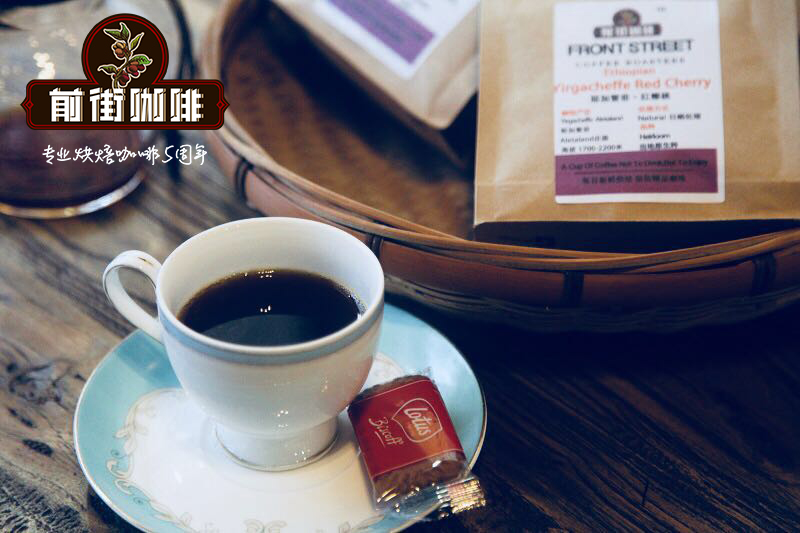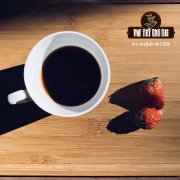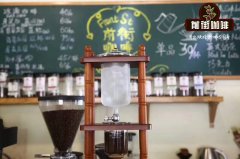How to understand the information of packaged coffee beans? can you eat packaged coffee beans directly? price of packaged coffee beans

Professional coffee knowledge exchange more coffee bean information please follow the coffee workshop (Wechat official account cafe_style)
A friend asked: "I bought a package of coffee beans, the label wrote a lot of words, like garbled, I do not need to pay attention to, just drink."
Yeah, drink it.
After drinking, I happen to have a pain in my spare time, so let's study what is written on the bag, or study it while drinking. The advantage is to pass the time and give you some confidence when choosing beans next time. Today, I'm going to irresponsibly teach you about the label of coffee packaging.
▼▼▼
First of all, I need to reiterate that what I said was very rough, and many of my arguments, based on my own experience, could not stand the test of science and the scrutiny of big shots. I just hope that in a short period of time, people who have just started to drink coffee will not be intimidated by those figures and nouns. At least not when you get a coffee bean, take a habitual glance at it, and then habitually put it down, confused.
▼▼▼
Let's take a look at the bags of some coffee beans I drank.
* from fragrant coffee
* from the minority
To sum up.
Such a few tough guys often appear on coffee bags.
I use color blocks to classify them.
█
Place of origin\ bean seed\ altitude
█
Producer\ batch\ processing plant
█
Picking treatment time\ baking degree\ treatment method\ flavor
█ producing area Region
The origin information is equivalent to the bean's first sentence of self-introduction: "who am I?" Different places of origin, different flavors. Here refers to the origin, is precisely located to the manor or even the plot. The bag of geisha above is from volcan in Panama. Beans from the same producing country have different natural conditions in different producing areas, and the flavor of beans is also slightly different. The idiom "southern orange and northern trifoliate orange" seems to mean this. However, I think it is enough to remember the main producing areas. No matter how small the area is, you may not even be able to pronounce the name. You only need to have the consciousness of "southern tangerine and northern trifoliate orange".
If you are idle and have sensitive bands all over your body, precise origin marking can also help you explore the different flavors of the same coffee in different natural conditions in different regions. For example, where the humidity is higher, it is easy to brew the aroma of fruit, while volcanic rock areas may grow the sweet and bitter smell of chocolate. Of course, I think it's very difficult. Have some coffee, take it easy.
Highlight: remember the main producing areas (such as Kenya,Panama, etc.)
█ bean seed Variety
This is difficult to say. As mentioned before, most of the boutique coffee belongs to Arabica (99.99%). At present, there are more than 2000-3000 coffee varieties under the Arabica category, but they are all descended from the two mother varieties, "Typica" and "Bourbon". Pure breeds are of course very rare (the same as cats and dogs), but hybrids don't mean bad. However, a characteristic of coffee is that it tends to be more resistant to diseases and insect pests, and coffee varieties with higher yields are also more likely to have a slightly inferior flavor. Scarcity is precious, and scarcity is often delicious. This law has not changed much in the coffee industry for the time being. At present, it is recognized that there are several varieties that are relatively ramming and easy to win awards: bourbon, typica, yellow bourbon, caturra, pacamara, catuai, geisha, which may also be common on the coffee bags you buy.
Highlight: Arabica\ Typica\ Bourbon
█ altitude Elevation
Boutique coffee basically grows above 3000 feet (912m), mainly because of the large temperature difference in the morning and evening at high altitude, sufficient sunshine time, coffee trees grow slowly and have more time to breed more rich flavor factors for the fruit. In principle, the higher the altitude, the higher the amount of sour aroma and sucrose, the more mellow the taste, and the lower the oil content. But this is not absolute, for example, some subtropical producing areas, although the altitude is not high, but there are monsoons, shade trees, ah, can also achieve similar high-altitude climate characteristics. For example, the coffee in Hawaii is very good.
Key points: altitude Elevation\ High altitude easy to produce good beans
█
Producer\ batch\ processing plant
It's not unimportant, but I don't understand it even though I read it. Connoisseurs, especially raw bean importers, may pay more attention to raw bean producers and processors. Different producers and processing plants must have advantages and disadvantages, but ordinary coffee addicts may be difficult to identify. Marking batches can also prove the unity of bean batches, and there are subtle differences in taste among different batches. So, you can think of these tags as meaning that the source of raw beans is guaranteed.
Highlight: it doesn't matter if you can't read it.
Brand recommendation of ● packaged coffee beans
Qianjie coffee freshly roasted single product-Italian packaged coffee beans: Yega Sheffield Coffee, Brazilian Coffee, Mantenin Coffee and so on are fully guaranteed in brand and quality, suitable for all kinds of utensils. And more importantly, the performance-to-price ratio is extremely high, a pack of half a pound 227 grams, the price is only 80-90 yuan. According to the calculation of 15 grams of powder per cup of hand-brewed coffee, 15 cups of coffee can be made in a bag, and each cup of coffee costs only about 6 yuan, which is very cost-effective for the normal price of 30 or 40 yuan a cup in a cafe.
Qianjie coffee: Guangzhou bakery, the store is small but a variety of beans, you can find a variety of unknown beans, but also provide online store services. Https://shop104210103.taobao.com
Important Notice :
前街咖啡 FrontStreet Coffee has moved to new addredd:
FrontStreet Coffee Address: 315,Donghua East Road,GuangZhou
Tel:020 38364473
- Prev

Packaging Coffee Bean Brand recommendation-Coffee Bean Packaging Design sharing-packaged Coffee Bean how to eat
Professional coffee knowledge exchange more coffee bean information Please follow the coffee workshop (Wechat official account cafe_style) with the continuous development of coffee boutique, friends who like coffee will find that the packaged coffee beans that can be seen on the market have become more and more sophisticated in recent years, from Kraft paper bags, plastic to aluminum foil, as well as bottles and boxes.
- Next

Guide for novice packaged coffee beans-how to buy packaged coffee beans-which brand of packaged coffee beans
Professional coffee knowledge exchange more coffee bean information please follow the coffee workshop (Wechat official account cafe_style) 1 what kind of coffee utensils to use to make coffee it is best to tell the clerk what kind of coffee brewing method you use. In this way, the shop assistant can recommend suitable coffee beans for you. In addition, you may also be able to share your experience with the shop assistant.
Related
- Guji coffee producing area of Guji, Ethiopia: Humbela, Shakiso, Wulaga
- What is the most expensive variety of Qiloso in BOP multi-variety group?
- How to store the coffee beans bought home?
- Why are Yemeni coffee beans so rare now?
- Ethiopian Sidamo all Red Fruit Sun Sun Santa Vini Coffee beans
- SOE is mostly sour? What does it mean? Is it a single bean? what's the difference between it and Italian blending?
- Is Italian coffee beans suitable for making hand-brewed coffee?
- How to choose coffee beans when making cold coffee? What kind of coffee beans are suitable for making cold coffee?
- Just entered the pit to make coffee, what kind of coffee beans should be chosen?
- Can only Japan buy real Blue Mountain Coffee? What are authentic Jamaican Blue Mountain coffee beans?

